AiPrise
10 mins read
August 22, 2025
How to Streamline Customer Verification for Fintech Companies?
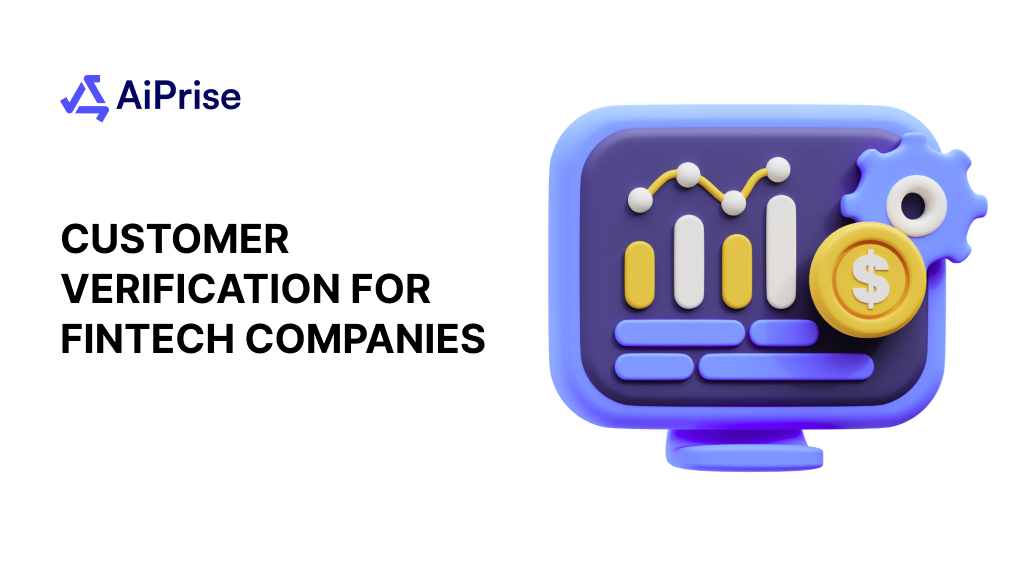
Key Takeaways










For fintech companies, a slow customer verification process is more than just an inconvenience; it's a direct threat to growth. Research from the Digital Banking Report indicates a customer abandonment rate in excess of 50% if the process takes more than three to five minutes. This friction not only harms the user's first impression but also directly impacts a company’s bottom line.
Traditional verification methods often fail to meet the modern demand for speed without compromising security. This article will explore practical strategies for fintech companies to enhance their customer verification, ensuring a faster, more effective, and secure onboarding experience.
Key Takeaways
- A slow, manual verification process is a major cause of customer churn, with over 50% of users abandoning a sign-up if it takes more than a few minutes.
- The solution lies in replacing outdated methods with digital-first strategies like biometric authentication and mobile-first document capture to create a fast, user-friendly experience.
- A risk-based approach with tiered verification models and real-time feedback ensures security is balanced with a positive customer journey.
- Using an integrated platform like AiPrise automates complex tasks, from AI-powered fraud screening to ongoing compliance checks, allowing you to scale without increasing operational costs.
Understanding Customer Verification and Its Importance
Customer verification is a foundational process for fintech companies, designed to confirm that a user is who they claim to be. This is typically done by collecting and validating personal details and identity documents against reliable sources. It's the first critical step in building a secure and compliant digital financial service.
Here's why customer verification is so important:
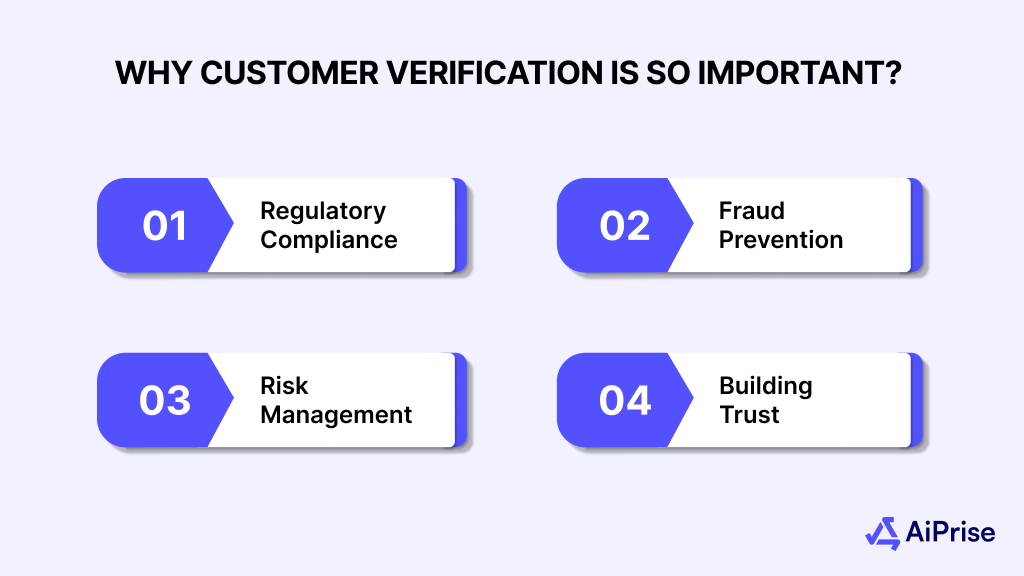
- Regulatory Compliance: It's a non-negotiable requirement to adhere to global regulations like Know Your Customer (KYC) and Anti-Money Laundering (AML). Failure to comply can result in severe legal penalties, hefty fines, and operational shutdowns.
- Fraud Prevention: Verification is the primary defense against identity theft, account takeovers, and fraudulent transactions. It protects the company's assets and its customers' finances by ensuring that bad actors can't misuse the platform.
- Risk Management: By thoroughly vetting customers, a company can better assess risk and make informed decisions. This allows for a more tailored approach to services and helps identify high-risk individuals or entities from the outset.
- Building Trust: A robust verification process signals to customers that their security is a top priority. In an industry built on trust, this commitment to safety is a key differentiator that fosters loyalty and strengthens brand reputation.
While its importance is clear, the path to achieving this is often challenging, leading many to struggle with streamlining the process without compromising security.
Challenges Faced by Fintech Companies in Customer Verification
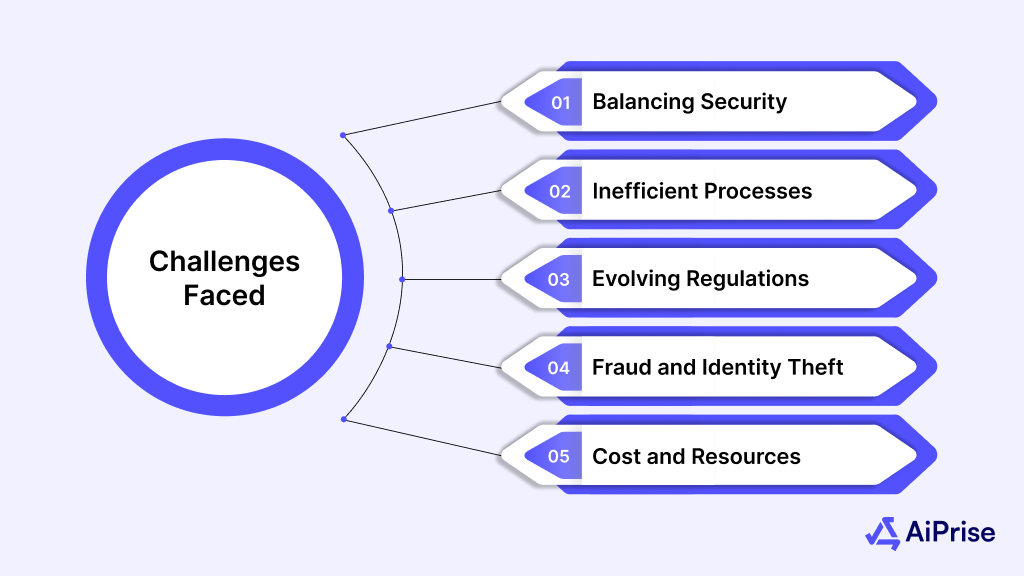
While customer verification is essential for regulatory compliance and fraud prevention, it's a process fraught with challenges that can hinder growth and frustrate users. Here are the common issues faced by fintech companies while verifying customer identities:
- Balancing Security with User Experience: The push for robust security measures, such as multi-factor authentication and document uploads, often creates a slow and cumbersome onboarding process. This friction can deter potential customers, who expect a fast and seamless digital experience.
- Manual and Inefficient Processes: Many companies still rely on manual review for document verification or enhanced due diligence. This is not only time-consuming and prone to human error, but also doesn't scale effectively as the business grows.
- Dealing with Evolving Regulations: The regulatory landscape is constantly changing, with new compliance requirements for KYC and AML being introduced regularly. Staying up-to-date and adapting systems to meet these evolving standards is a significant and costly challenge.
- Fraud and Identity Theft: As verification methods become more sophisticated, so do the tactics of fraudsters. Fintechs must contend with increasingly complex threats like synthetic identity fraud, where criminals use a mix of real and fake information to create a new identity. This makes it difficult to trust traditional verification methods alone.
- Cost and Resources: Implementing and maintaining a robust, automated verification system can be expensive. For startups and smaller fintechs, the cost of technology, compliance, and dedicated personnel can be a significant barrier to entry and growth.
Addressing these challenges requires a strategic approach that prioritizes efficiency and user experience without compromising security. Fortunately, many modern solutions can help fintechs overcome these hurdles and build a more effective onboarding process.
4 Key Strategies to Streamline Customer Verification Process
Building a more efficient and effective customer verification process doesn't mean sacrificing security for speed. It's about working smarter, not harder, by using the right tools and strategies.
Here are some actionable steps fintech companies can take to enhance their onboarding flow and create a better experience for everyone.
1. Embrace Digital Identity Verification
For a smooth onboarding experience, fintech companies should adopt a digital-first approach to identity verification. This moves the process away from slow, manual checks and into a fast, user-friendly digital environment.
- Mobile-First Document Capture: Allow users to verify their identity by simply taking a photo of their government-issued ID and a selfie. The system then uses Optical Character Recognition (OCR) to automatically extract data from the document. The selfie is used for a "liveness check" to ensure the person is real and matches the photo on the ID.
- Biometric Authentication: Incorporate unique physical characteristics like fingerprints or facial recognition for verification. This method provides a higher level of security and a more convenient user experience, as it eliminates the need for passwords or manual document submission after initial setup.
By adopting these modern, digital-first strategies, fintechs can transform a once-cumbersome process into a competitive advantage that drives growth and builds lasting customer trust.
2. Optimize the Onboarding Process
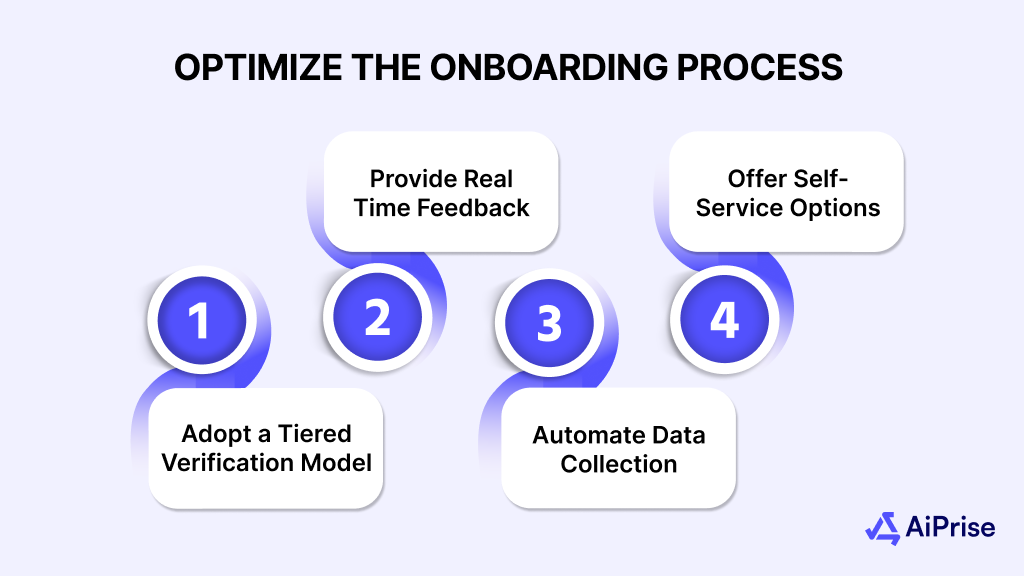
A streamlined onboarding flow can drastically reduce customer drop-off. This involves being strategic about when and how you ask for information, making the process feel less like a chore and more like a simple sign-up.
- Adopt a Tiered Verification Model: Not all customers pose the same risk. A tiered system allows a company to adjust the level of verification based on the customer's risk profile and the services they want to access. For example, a user who only wants to receive marketing emails might only need an email address, while someone applying for a credit card will require more thorough checks.
- Provide Real-Time Feedback: Nothing is more frustrating for a user than submitting information and waiting indefinitely for a response. By integrating a system that gives instant feedback, you can keep users engaged and help them complete the process quickly. This could be as simple as a pop-up that says, "Success! Your document has been uploaded," or "The image is blurry; please retake the photo."
- Automate Data Collection: Don't make the user manually input every piece of information. By integrating with third-party data sources, you can pre-fill forms with publicly available data, such as a customer's address, using just a few key details.
- Offer Self-Service Options: Empower customers to resolve their own issues. If a document is rejected, provide clear instructions and the option for them to re-upload it on their own, rather than forcing them to contact customer support.
By making the onboarding journey intuitive and efficient, you can significantly improve completion rates and start building customer relationships on a positive note.
3. Utilize Technology to Automate Processes
Automating the verification process is essential for scaling and reducing operational costs. By letting technology handle routine tasks, human agents can focus on more complex cases that require their expertise.
- AI and Machine Learning: These tools can automate document verification, screen for fraud, and perform background checks with a speed and accuracy that manual reviews can't match. AI-powered systems can flag suspicious documents or behavior patterns in real time, routing only the riskiest cases for human review.
- Choose Scalable Solutions: Select verification tools and platforms that can grow with your business. A scalable solution can handle an increasing volume of users without a proportional increase in operational costs or manual effort. This ensures your verification process remains efficient even as your user base expands.
- Continuous Monitoring: Verification shouldn't end after a customer is onboarded. Ongoing monitoring of customer transactions and behavior helps detect new risks as they emerge. AI systems can automatically flag suspicious activity or trigger a re-verification process for customers whose behavior changes significantly.
- Third-Party API Integration: Instead of building every verification tool from scratch, fintechs can partner with specialized third-party providers. These APIs can plug into a company's system to perform a range of automated services, from identity checks to AML screenings, and cross-reference information against global databases and watchlists in seconds.
By embracing automation, fintechs can create a more efficient and reliable verification system that frees up resources and allows for faster growth.
4. Prioritize Security and Trust
While speed is important, security and trust are the foundation of any financial service. Building a secure process from the ground up instills confidence in both customers and regulators, which is critical for long-term success.
- End-to-End Encryption: Ensuring all customer data, from the moment it's collected to when it's stored, is encrypted. This protects sensitive information from being intercepted and demonstrates a commitment to data privacy.
- Clear Communication: Being transparent with customers about why you're asking for their information and how it will be used. A simple, honest explanation like, "We need to verify your identity to protect your account from fraud and comply with regulations," can build trust and make the process feel less intrusive.
- Ongoing Monitoring and Audits: Security is not a one-time setup. Regularly auditing your verification systems and processes helps identify vulnerabilities and ensures you remain compliant with the latest regulations. This proactive approach helps maintain a high level of security and trust over time.
By building a verification process on a foundation of security and transparency, fintechs can not only meet regulatory obligations but also earn the trust and loyalty of their customers.
With a clear understanding of these strategies, let's explore how a dedicated platform like AiPrise can help you implement them effectively.
Partnering with AiPrise for Enhanced Customer Verification
AiPrise is a platform that simplifies identity verification and compliance by providing a single solution for businesses to manage their user onboarding. It helps companies automate complex checks and create a customizable framework, ensuring they meet regulatory obligations while providing a fast and efficient experience.
For fintech companies, this translates into a powerful way to manage the entire customer verification lifecycle. Here are some key features that make AiPrise a valuable partner:
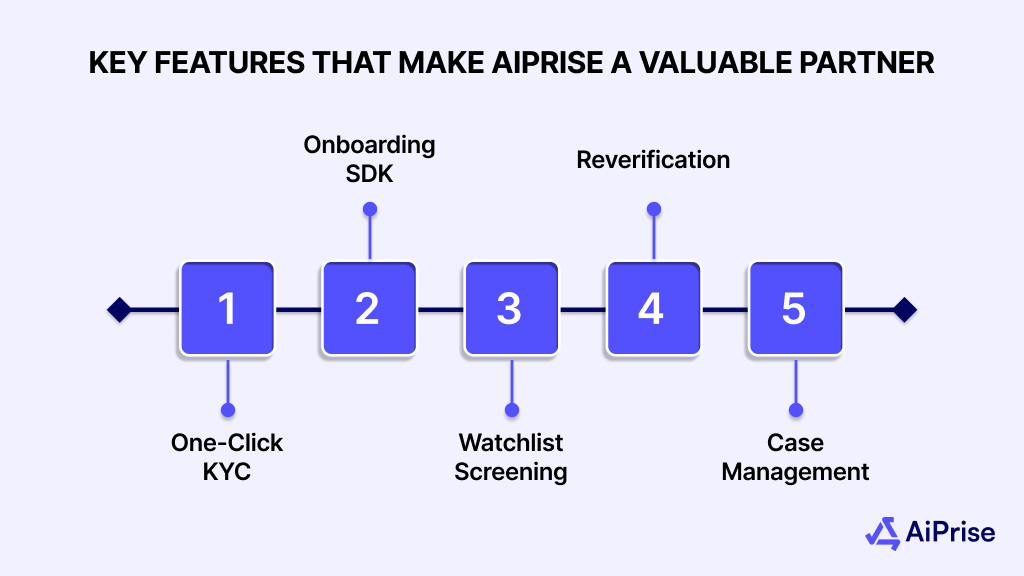
- One-Click KYC: For qualifying users, this feature can complete a full KYC check with minimal input, significantly reducing user effort and increasing conversion rates.
- Onboarding SDK: Easily integrate the verification flow directly into your mobile app or website. This provides a customizable user interface for document and selfie capture, ensuring a consistent and professional look.
- Watchlist Screening: The platform automatically screens individuals and businesses against global sanctions, Politically Exposed Persons (PEPs), and adverse media watchlists in real time, ensuring you stay compliant with regulatory requirements.
- Reverification: Security is not a one-time event. AiPrise allows you to set up triggers for re-verifying a customer's identity, such as after a new device login or a significant transaction.
- Case Management: For any cases that require manual review, the platform provides a centralized dashboard for your team. This allows them to quickly investigate flagged users, see a complete audit trail, and make informed decisions efficiently.
By centralizing these tools into one platform, AiPrise allows fintech companies to reduce operational friction and focus on what they do best: building innovative financial products.
Conclusion
Success for fintechs hinges on their ability to build trust and deliver a superior user experience from the very first interaction. By moving away from cumbersome, manual checks and embracing a more modern, technology-driven approach, companies can transform customer verification from a necessary obstacle into a powerful competitive advantage.
Ready to build a smarter, faster, and more secure customer verification process? Book A Demo with AiPrise to see firsthand how our platform can help you automate complex workflows, reduce friction for your users, and ensure compliance with confidence.
FAQs
1. What is the KYC process in fintech?
KYC (Know Your Customer) is the process of verifying a customer's identity before providing them with financial services. This is carried out to prevent illegal activities like fraud and money laundering. It typically involves collecting and verifying a customer's personal details and official identification documents.
2. What are the AML regulations for fintech?
AML (Anti-Money Laundering) regulations are a framework of laws and procedures to detect and prevent financial crimes. For fintechs, this includes implementing KYC procedures, screening customers against sanctions lists and watchlists, monitoring transactions for suspicious activity, and reporting any illegal behavior to the relevant authorities.
3. Why is a risk-based approach to KYC important?
A risk-based approach allows fintech companies to tailor their verification efforts to the level of risk a customer presents. For example, a user signing up for a basic service might only require a simple ID check, while a user applying for a loan or high-value account would undergo more thorough screening and enhanced due diligence.
4. Is KYC a one-time process?
No, KYC is an ongoing process. While initial verification happens during onboarding, fintechs are required to perform continuous monitoring of customer accounts and transactions. This helps detect new risks as they emerge and ensures that a customer's information remains up-to-date and accurate over time.
5. How does technology help with fintech verification?
Technology, such as AI and machine learning, helps automate many parts of the verification process, including document scanning, facial recognition, and data extraction. This not only makes the process faster and more convenient for users but also improves accuracy and helps detect sophisticated fraud that manual checks might miss.
You might want to read these...

Aiprise has helped streamline our KYB (Know Your Business) flow in 100+ countries. No other tool comes close.





Speed Up Your Compliance by 10x
Automate your compliance processes with AiPrise and focus on growing your business.





